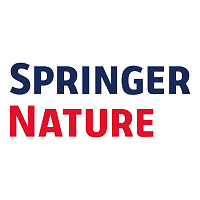BackgroundPrevious studies have demonstrated that exposure to nickel nanoparticles (Nano-Ni) causes oxidative stress and severe, persistent lung inflammation, which are strongly associated with pulmonary toxicity. However, few studies have investigated whether surface modification of Nano-Ni could alter Nano-Ni-induced lung injury, inflammation, and fibrosis in vivo. Here, we propose that alteration of physicochemical properties of Nano-Ni through modification of Nano-Ni surface may change Nano-Ni-induced lung injury, inflammation, and fibrosis.MethodsAt first, dose-response and time-response studies were performed to observe lung inflammation and injury caused by Nano-Ni. In the dose-response studies, mice were intratracheally instilled with 0, 10, 20, 50, and 100g per mouse of Nano-Ni and sacrificed at day 3 post-exposure. In the time-response studies, mice were intratracheally instilled with 50 mu g per mouse of Nano-Ni and sacrificed at days 1, 3, 7, 14, 28, and 42 post-instillation. At the end of the experiment, mice were bronchoalveolar lavaged (BAL) and the neutrophil count, CXCL1/KC level, LDH activity, and concentration of total protein in the BAL fluid (BALF) were determined. In the comparative studies, mice were intratracheally instilled with 50g per mouse of Nano-Ni or with the same molar concentration of Ni as Nano-Ni of either partially [O]-passivated Nano-Ni (Nano-Ni-P) or carbon-coated Nano-Ni (Nano-Ni-C). At day 3 post-exposure, BAL was performed and the above cellular and biochemical parameters in the BALF were analyzed. The MMP-2/9 protein levels and activities in the BALF and mouse lung tissues were also determined. Mouse lung tissues were also collected for H&E; staining, and measurement of thiobarbituric acid reactive substances (TBARS) and 8-hydroxy-2-deoxyguanosine (8-OHdG) in the genomic DNA. At day 42 post-exposure, mouse right lung tissues were collected for H&E; and Trichrome stainings, and left lung tissues were collected to determine the hydroxyproline content.ResultsExposure of mice to Nano-Ni resulted in a dose-response increase in acute lung inflammation and injury reflected by increased neutrophil count, CXCL1/KC level, LDH activity, and concentration of total protein in the BALF. The time-response study showed that Nano-Ni-induced acute lung inflammation and injury appeared as early as day 1, peaked at day 3, and attenuated at day 7 post-instillation. Although the neutrophil count, CXCL1/KC level, LDH activity, and concentration of total protein in the BALF dramatically decreased over the time, their levels were still higher than those of the controls even at day 42 post-exposure. Based on the results of the dose- and time-response studies, we chose a dose of 50 mu g per mouse of Nano-Ni, and day 3 post-exposure as short-term and day 42 post-exposure as long-term to compare the effects of Nano-Ni, Nano-Ni-P, and Nano-Ni-C on mouse lungs. At day 3 post-exposure, 50g per mouse of Nano-Ni caused acute lung inflammation and injury that were reflected by increased neutrophil count, CXCL1/KC level, LDH activity, concentration of total protein, and MMP-2/9 protein levels and activities in the BALF. Nano-Ni exposure also caused increased MMP-2/9 activities in the mouse lung tissues. Histologically, infiltration of large numbers of neutrophils and macrophages in the alveolar space and interstitial tissues was observed in mouse lungs exposed to Nano-Ni. Nano-Ni-P exposure caused similar acute lung inflammation and injury as Nano-Ni.However, exposure to Nano-Ni-C only caused mild acute lung inflammation and injury. At day 42 post-exposure, Nano-Ni caused extensive interstitial fibrosis and proliferation of interstitial cells with inflammatory cells infiltrating the alveolar septa and alveolar space. Lung fibrosis was also observed in Nano-Ni-P-exposed lungs, but to a much lesser degree. Only slight or no lung fibrosis was observed in Nano-Ni-C-exposed lungs. Nano-Ni and Nano-Ni-P, but not Nano-Ni-C, caused significantly elevated levels of TBARS in mouse lung tissues and 8-OHdG in mouse lung tissue genomic DNA, suggesting that Nano-Ni and Nano-Ni-P induce lipid peroxidation and oxidative DNA damage in mouse lung tissues, while Nano-Ni-C does not.ConclusionOur results demonstrate that short-term Nano-Ni exposure causes acute lung inflammation and injury, while long-term Nano-Ni exposure causes chronic lung inflammation and fibrosis. Surface modification of Nano-Ni alleviates Nano-Ni-induced pulmonary effects; partially passivated Nano-Ni causes similar effects as Nano-Ni, but the chronic inflammation and fibrosis were at a much lesser degree. Carbon coating significantly alleviates Nano-Ni-induced acute and chronic lung inflammation and injury.

Comparative mouse lung injury by nickel nanoparticles with differential surface modification
Review badges
0 pre-pub reviews
0 post-pub reviews

